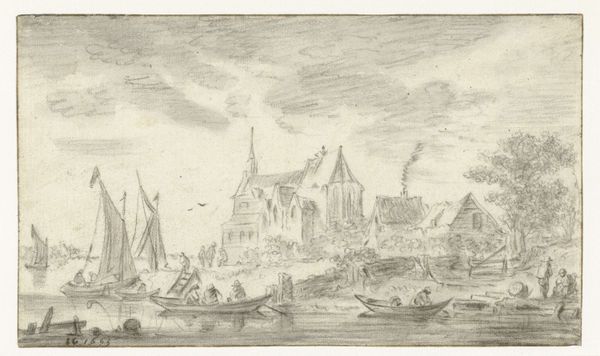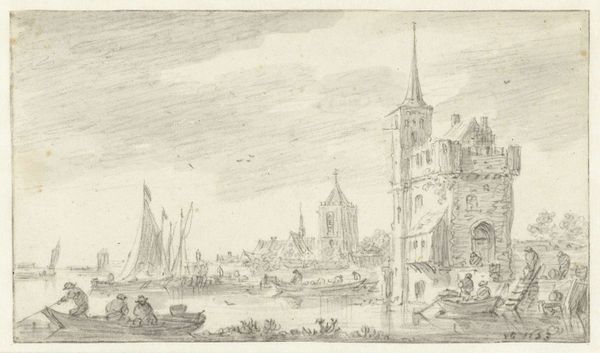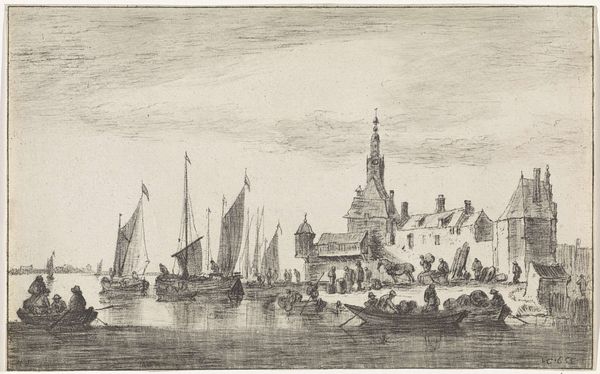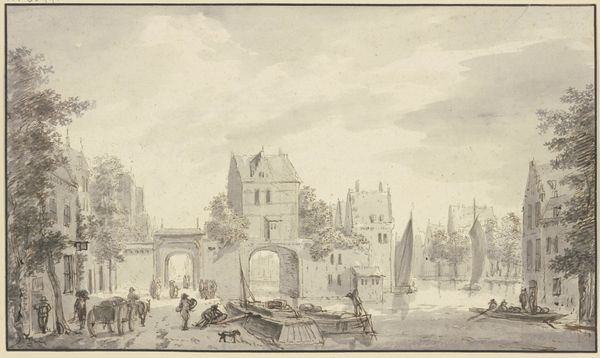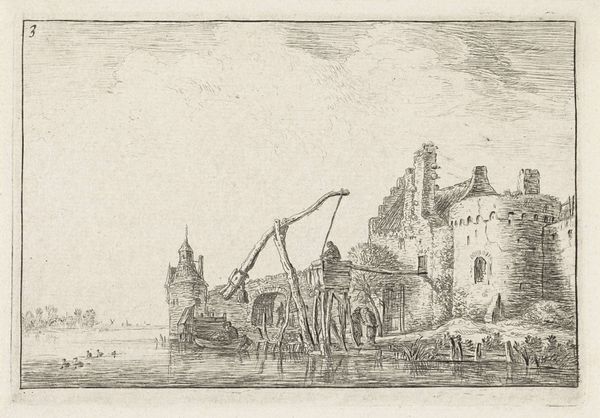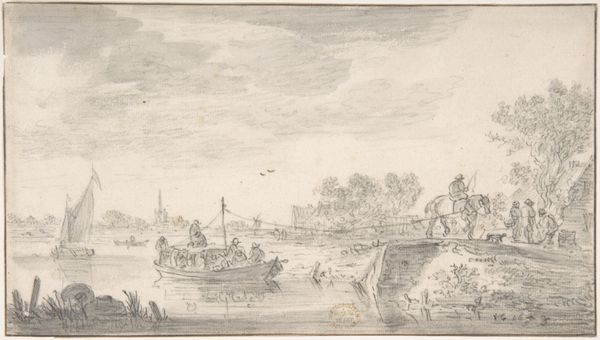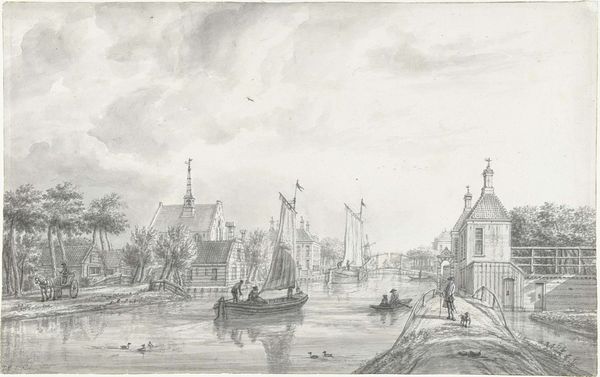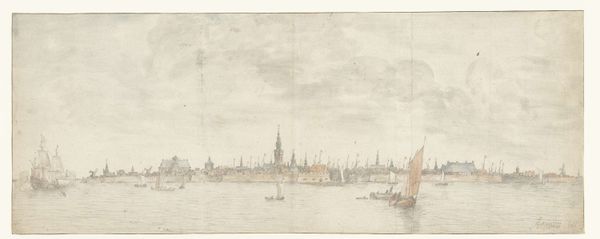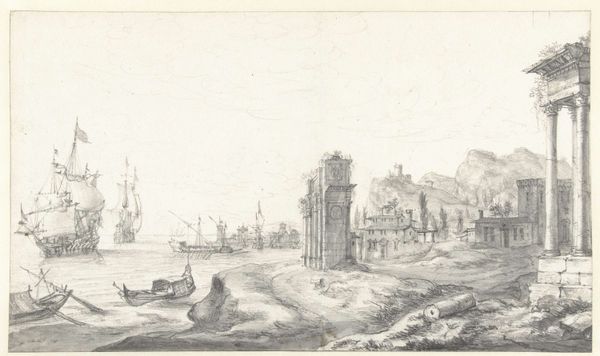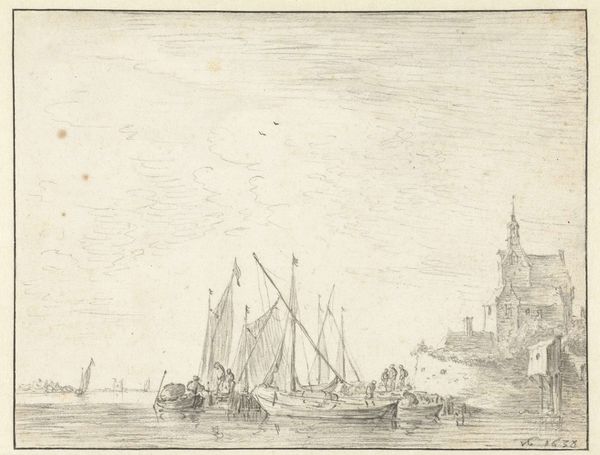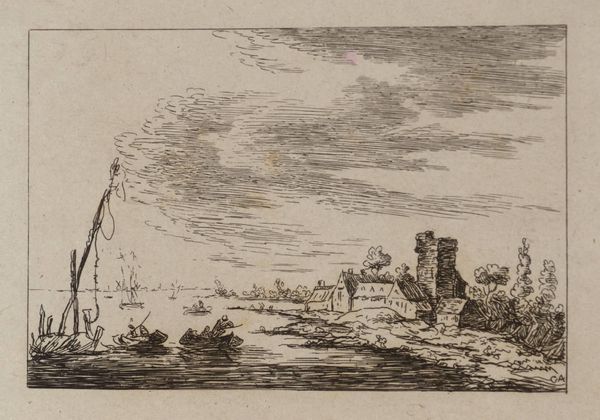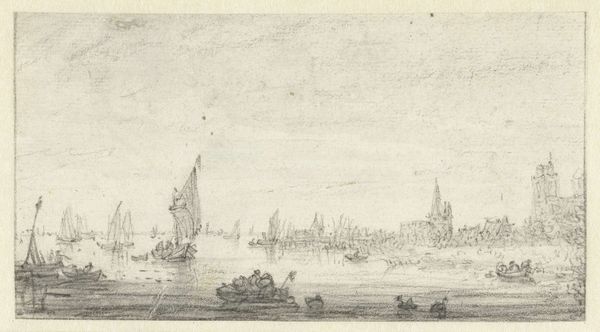
drawing, paper, pencil
#
drawing
#
dutch-golden-age
#
landscape
#
paper
#
pencil
#
cityscape
#
realism
Dimensions: height 119 mm, width 197 mm
Copyright: Rijks Museum: Open Domain
Editor: Look at this stunning sketch of Delft from 1652 by Jan van Goyen. The atmospheric perspective really pulls you in, doesn't it? Curator: It's remarkable how such simple means—pencil on paper—achieve such a complex layering of visual planes and textures. Note how the horizon line's placement emphasizes the dynamism of the sky against the static horizontality of the townscape. Editor: The texture of the paper itself feels significant. The roughness interacts with the pencil strokes to create this hazy effect. I wonder what type of pencil he would have used, and how the graphite itself was sourced and processed. I also like considering the labor, skill, and materials that go into something we consider 'disposable,' like paper. Curator: Precisely! That granular quality heightens the semiotic play between presence and absence. The subtle shifts in tonal values articulate depth and recession. Notice, for example, the reduction of detail in the distant buildings, in stark contrast to the textural definition closer to the viewer, which emphasizes that perspective and visual construction. Editor: And consider how that contrasts with Delft's historical context. This wasn't some objective rendering. Van Goyen is representing a place defined by the economic and material culture that produced his paper, pencils, and patronage! The waterways he depicts facilitated commerce, while the windmill suggests the presence of local industries that support his art and life. Curator: Yes, but this emphasis doesn't diminish from the formal qualities inherent in van Goyen’s organization of space and light. This subtle yet profound study of light across architecture presents us with clear symbols of prosperity: it invites contemplative study of structural motifs within the composition. Editor: Maybe. But, by dwelling on how it’s made, and how its elements reflect their age, it enhances my appreciation beyond purely aesthetic engagement. It adds layers of meaning. Curator: I suppose we are simply viewing the same subject through a divergent, albeit valuable, lens. Editor: Precisely. Perhaps, through appreciating its construction and context, we deepen and transform its perceived visual worth.
Comments
No comments
Be the first to comment and join the conversation on the ultimate creative platform.
